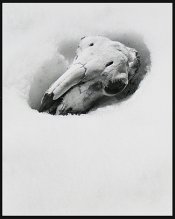WILL WORK FOR FILM
Member
We are very close to having a snow covered landscape here in beautiful South Western Idaho and I am looking forward to trying my hand at Black and white landscape photography with my Nikon F4 and Tri-x 400. I have read several online tutorials and think I have a handle on the basic principals of properly exposing for a mostly white scene, but would like to get a few personal opinions on the matter.
Scenario:
-A cold partly cloudy day with lots of fresh snow (common here). Mostly high desert vegetation and a far off tree or two.
-Nikon F4, tri-x at ISO 400 and maybe a yellow #12 filter to lighten the foliage and possibly bring out cloud detail.
-Based on what I have read, I might "spot meter" the bright white snow and use exposure compensation (+1 to +1-1/2) to avoid under exposing the snow since the meter will consider the metered point Zone 5.
Does this sound reasonable?
Scenario:
-A cold partly cloudy day with lots of fresh snow (common here). Mostly high desert vegetation and a far off tree or two.
-Nikon F4, tri-x at ISO 400 and maybe a yellow #12 filter to lighten the foliage and possibly bring out cloud detail.
-Based on what I have read, I might "spot meter" the bright white snow and use exposure compensation (+1 to +1-1/2) to avoid under exposing the snow since the meter will consider the metered point Zone 5.
Does this sound reasonable?








